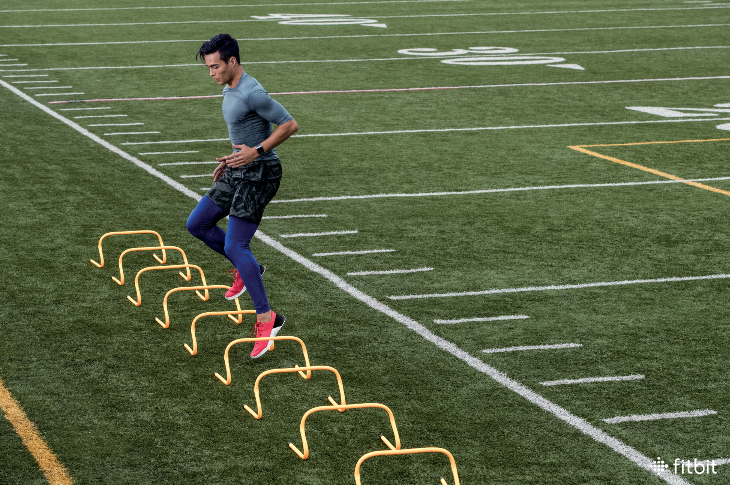 If you’re a serious runner, chances are good that one of your New Year’s resolutions is to get fitter and faster in 2019. Now what if we told you that the best way to do that is to slow down?
If you’re a serious runner, chances are good that one of your New Year’s resolutions is to get fitter and faster in 2019. Now what if we told you that the best way to do that is to slow down?
Professional runners know to incorporate slower training days into their schedules, but too often the rest of us get caught up in the “numbers”—how far we ran, how fast, and how many times we laced up our running shoes in the last week.
The problem with this approach is that by pushing hard every workout, your muscles—including your heart—don’t have time to recover, rebuild, and get stronger.
A better plan is to mix long, slow days with shorter speed workouts and tempo runs, says Cris Dobrosielski, a spokesman for the American Council on Exercise and owner of Monumental Results in San Diego.
That’s where heart rate training comes in. The idea is to use your heart rate (or beats per minute) to gauge how intense your workouts should be. Not all workouts should be at top intensity. By calculating your maximum heart rate, you’ll be able to determine your various heart rate training zones and use those numbers to plan your workouts so that you train your body to run faster without putting undue stress on your cardiovascular or musculoskeletal systems.
“If we could sprint a 10K, we would all set records and that would be great, but we can’t for a bunch of reasons, the most important of which is that your body has aerobic and anaerobic exertion thresholds,” says Dobrosielski, whose clientele includes elite runners and swimmers. Your aerobic threshold is the level above which lies an improvement in aerobic performance; your anaerobic threshold is the level above which it’s easier to clear lactic acid from your blood.
Heart rate training allows you to gradually push those thresholds, so that you can tolerate a higher level of exertion–and subsequently get faster.
Here’s how to get started:
1. Calculate your maximum heart rate. The most common formula for calculating your maximum heart rate (MHR) is to subtract your age from 220. So if you are 35 years old, your MHR would be 220 – 35 = 185. This is the maximum number of beats per minute that your cardiovascular system can tolerate during physical activity.
While this formula is fairly accurate for most people in calculating their heart rate training zones (see #2 below), Dobrosielski prefers to use Heart Rate Reserve, which is:
Maximum Heart Rate = 220 – Age
Heart Rate Reserve = Maximum Heart Rate – Resting Heart Rate
Luckily, your Fitbit device calculates your resting heart rate so you don’t have to. Find out more about tracking your heart rate with your Fitbit device here.
2. Determine your heart rate training zones. Dobrosielski has identified five training zones:
- Zone 1: 50-60 percent of max heart rate. This is an easy or active recovery day, and is likely the zone you’ll be training in a day after a hard workout. At this pace, you can easily maintain a conversation.
- Zone 2: 60-70 percent of max heart rate. This is a low-end aerobic zone, and is the pace at which you’ll train during your long, slow distance days (typically once a week). You should still be able to converse with friends and have no trouble with breathing.
- Zone 3: 75-80 percent of max heart rate. This is a high-end aerobic pace, where conversation is more difficult (you’d likely have to talk in short sentences to keep your breathing on track). This is the zone in which most of your weekly training will take place and it’s where you’re likely to build your endurance.
- Zone 4: 85-90 percent of max heart rate. This is the anaerobic threshold and the upper end of your capacity. You can’t possibly sustain this pace indefinitely but it’s an important zone to train in if you want to improve your 5k or 10k race pace.
- Zone 5: 90-100 percent of max heart rate. You can typically only sustain this pace for 20 to 30 seconds, but it’s important to incorporate these speed bursts in order to train for the final 200-300 meter “kick” at the end of races. The one that will allow you to pass your fellow competitors just short of the finish line.
3. Plan your weekly workouts. The number of days that you spend in each training zone depends largely on how many days a week that you can train, Dobrosielski says. “When you are trying to put together a workout plan to get faster or to lose weight, you have to look at three variables: frequency, intensity, and time. Each of the three really matters. If your time is short, then your exertion has to be higher; most of your work will be in the higher-end aerobic range. If you want to burn fat, then you’re really talking about more workouts at a lower intensity of 45 minutes or better.”
4. Use this plan to get faster. Ideally, a commitment of 5 or 6 days a week will yield the best results. Dobrosielski recommends that two of those days be at high intensity (zones 4 and 5)—think track workouts or hill repeats. You’ll want to spread those days out as much as possible (say, Wednesdays and Saturdays). Anchored in between will be two days of high-end aerobic work—tempo runs in zone 3—at a manageable speed. Finally, you’ll want one long, slow day in zone 2. If you add a sixth day, you’ll want to do that as an “active recovery” day in zone 1.
5. How to tell if you’re overtraining. One final note: As long as you’re checking your heart rate regularly, it’s a good idea to take note of your resting heart rate each morning. If you see that your RHR is up a few beats, that may be an indication you need to back off and rest up for a day or two, Dobrosielski says. Then it’s time to get back to work!
This information is for educational purposes only and is not intended as a substitute for medical diagnosis or treatment. You should not use this information to diagnose or treat a health problem or condition. Always check with your doctor before changing your diet, altering your sleep habits, taking supplements, or starting a new fitness routine.

If you have questions about a Fitbit tracker, product availability, or the status of your order, contact our Support Team or search the Fitbit Community for answers.
Please note: Comments are moderated and may not appear immediately after submission.